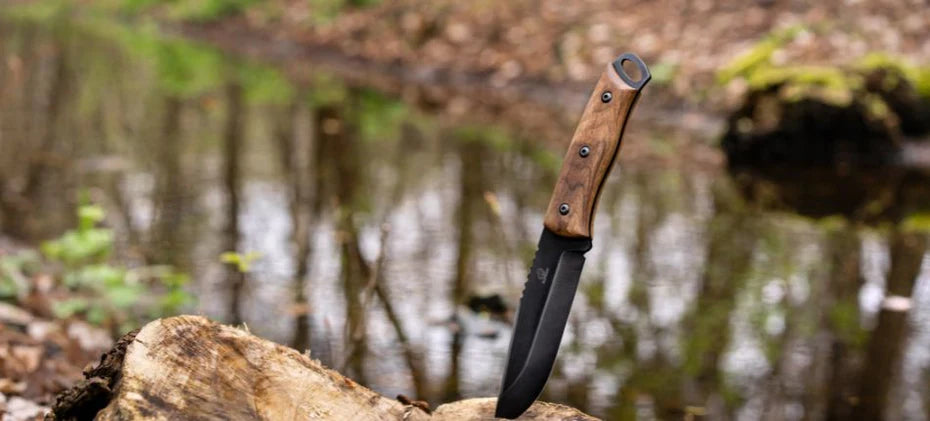What is Bushcraft: Complete Guide for Survivalists

In the world of wilderness mastery, where the art of survival meets the craft of thriving, one term stands tall: bushcraft. But what is bushcraft, really, and why does it hold such significance for those venturing into the wild? With this guide, you will unravel the intricacies of bushcraft basics, equipping you for a journey of exploration and self-sufficiency in the great outdoors.
History of Bushcraft
Rooted in ancient practices and indigenous wisdom, bushcrafting originated in diverse regions such as Australia, North America, and Scandinavia. These skills were born out of necessity, where people learned to harmonize with nature effectively for survival. With its rich history, bushcraft has evolved over time, adapting to various environments and becoming a universal set of skills for those seeking a profound connection with the natural world in the wild. Do not forget to check Best Locations To Practice Bushcraft article.

Benefits of Bushcraft
Engaging in bushcraft not only hones your survival skills but also offers many benefits. It fosters self-reliance, enhances problem-solving abilities, and instills a deep appreciation for nature. As a survivalist, bushcraft provides the tools to adapt and thrive in the wild, fostering resilience and resourcefulness.

Essential Bushcraft Skills
When discussing bushcraft skills, we're referring to a comprehensive set. Basic survival skills, like fire building, tool crafting, and shelter construction, are the bedrock. But to truly master bushcraft, one must delve into the nuances of knife skills, water sourcing, understanding the flora and fauna of the region, foraging for food, navigating the wild, and so on. These essential bushcraft skills are the threads that weave together the fabric of survival expertise.

Knife Skills
A fundamental aspect of bushcraft is mastering bushcraft knife skills. A reliable knife is the survivalist's best friend, serving tasks like cutting, carving, chopping, and more. Opt for a versatile fixed-blade knife with a full tang for durability. There are various bushcraft knives that cater to specific tasks like woodwork, fire-starting, food preparation, survival tasks, and everyday needs. Check out our detailed guide of the best knives for bushcraft.

Fire Building
Basic bushcraft skills include the art of fire building. Learn to create fire using various methods like friction, sparks, or magnifying glass. Carry reliable fire-starting tools such as waterproof matches, a firestarter, or a ferrocerium rod for emergencies.

Water Sourcing and Purification
Locating, filtering, and purifying water are vital bushcraft survival skills. Know where to find water sources and carry a portable water filter or purification tablets. Boiling water is a classic method, so a heat-resistant container is a must in your bushcraft gear.

Shelter Building
Crafting a shelter is essential for protection against the elements. Learn to construct basic shelters using natural materials like branches and leaves. A lightweight, compact tarp can also be a valuable addition to your gear for quick shelter solutions.
Navigating in the Wild
Orientation is vital in the wilderness. Develop skills in using a compass, reading maps, and identifying natural landmarks. Consider GPS devices for advanced navigation, but always have a basic understanding of traditional methods.

Bushcraft Gear and Equipment
When venturing into the wild, having the right gear and equipment is the linchpin of a successful bushcraft experience. The realm of bushcraft survival gear encompasses a spectrum of tools designed to ensure preparedness and efficiency. From indispensable bushcraft tools to purpose-built gear, understanding the significance of well-chosen bushcraft equipment is paramount for any survivalist.

Essential Bushcraft Tools
Invest in quality bushcraft tools like a sturdy hatchet or bushcraft axe for heavy-duty tasks like wood processing, a reliable bushcraft knife for precise tasks such as carving, splitting, and skinning, a multi-tool for additional functionalities, and a ferro rod for fire starting. Carry these in a well-designed sheath or tool belt pouch for easy access. The right tools make a significant difference in your efficiency and safety in the wild. Interested in what is the best axe for bushcraft?

Safety Gear for Bushcraft
Prioritize safety with bushcraft gear like a first aid kit, signaling devices, and a compact flashlight. Equip yourself with proper clothing and footwear suitable for the environment. Safety gear is not just a precaution; it's an essential part of responsible exploration.
Bushcraft Activities
Bushcraft is not merely a set of skills; it's a series of engaging activities that bring these skills to life. From beginner bushcraft tasks like carving simple tools to advanced activities like crafting your gear or mastering new fire-making techniques, each endeavor contributes to a survivalist's repertoire. It's a progression from basic bushcraft skills to profound mastery.

Tips for Bushcraft Beginners
For budding bushcraft enthusiasts embarking on their wilderness journey, a few key bushcraft tips can make the experience both enjoyable and educational. First and foremost, stay hydrated – it sounds basic, but it's a cornerstone of survival. In the excitement of exploring the wonders of nature, it's easy to overlook the simple act of drinking water. Secondly, pay keen attention to your environment. Nature is a teacher, and every rustle of leaves or change in wind direction holds valuable information. Being attuned to your surroundings enhances your situational awareness, a critical skill in the wild. Lastly, don't forget to stay oriented. Getting lost in the wild can happen, but staying oriented ensures that your bushcraft adventure remains exhilarating rather than daunting.

